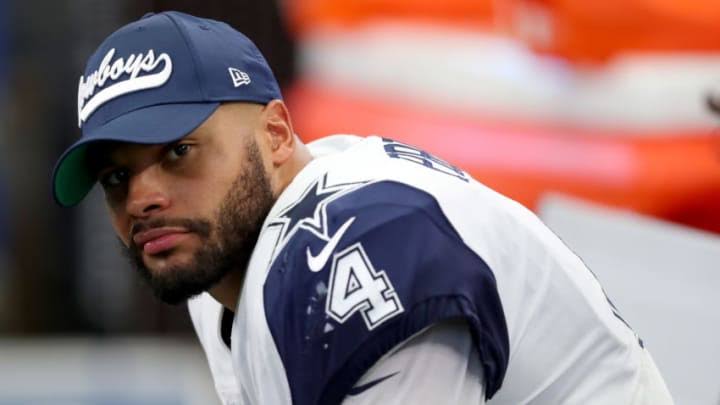Accusations have recently emerged alleging that the Philadelphia Eagles used deceptive tactics to provoke an interception by Dallas Cowboys quarterback Dak Prescott during a recent game. These allegations are rooted in claims that the Eagles employed strategies designed to exploit Prescott’s decision-making process, leading to a critical turnover.
According to the allegations, the Eagles might have engaged in a range of tactics aimed at confusing or misleading Prescott. These could include defensive alignments or shifts intended to create confusion about coverage schemes. Such tactics might involve pre-snap movements or disguising the defensive strategy to make it difficult for Prescott to read the defense accurately.
One possible tactic is the use of defensive players who appear to be in one position before the snap but quickly shift to another once the play begins. This kind of maneuver can disrupt a quarterback’s ability to anticipate defensive movements and make accurate throws. For example, a defensive back might initially line up in a way that suggests a zone coverage, only to switch to man coverage or a different zone as the play develops. This shift could lead to a misjudgment by Prescott, resulting in a poorly timed or ill-advised pass.
Another accusation involves the potential for the Eagles to use psychological tactics to unnerve Prescott. These might include verbal taunts or strategic substitutions designed to create a sense of urgency or confusion. While less tangible, such psychological strategies can also influence a quarterback’s performance under pressure.
It’s important to note that such strategies, if employed, fall within the gray area of competitive play. While they may be seen as unconventional or even unsportsmanlike by some, they are not necessarily illegal within the rules of the game. The NFL’s regulations provide a broad scope for defensive tactics, and teams often push the boundaries to gain an edge.
The impact of these tactics on Prescott’s interception can be significant. The quarterback’s ability to read and react to the defense is crucial for successful offensive play. Any disruption to this process can lead to mistakes, as seen in the interception. However, attributing the entire outcome of the play solely to these tactics might oversimplify the complexities of the game, where multiple factors, including Prescott’s own decisions and the performance of his offensive line, play critical roles.
In conclusion, while the accusations against the Eagles suggest a strategic approach to causing Prescott to throw an interception, these tactics are part of the broader competitive nature of football. They highlight the intricate dance between offense and defense, where psychological and strategic maneuvers can influence the outcome of crucial plays.


